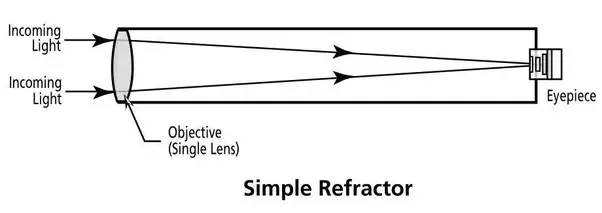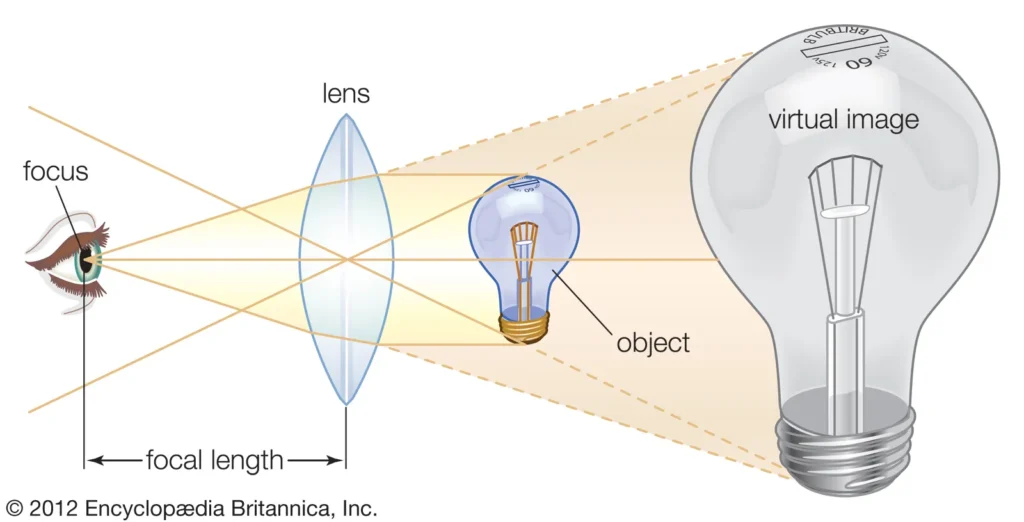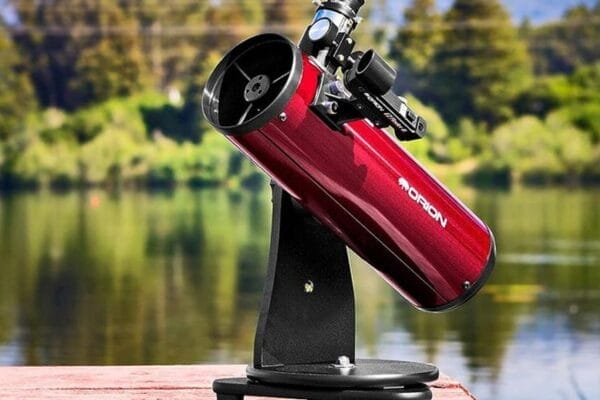How Does Magnification Work In Binoculars And Telescopes
Enabling the Dark Sky feature on telescopes or binoculars provides an opportunity to view objects that would otherwise be invisible or too faint to see with the naked eye. The magnification level of these optical devices determines the degree of enlargement of the object viewed. Binoculars and telescopes designate magnification by the number preceding the “X.” For instance, in a 10×42 binocular, the “10x” represents its level of magnification. Magnification enhances the resolution of distant and poorly lit objects, making them appear more apparent and prominent. These devices are unique in unlocking the universe’s secrets, unveiling hidden treasures that ordinarily remain out of reach.
Just because it is faint does not mean it is a small ~ Telescope trove.
What is Magnification?
Magnification is a fundamental concept in optics, which refers to the degree to which an object’s Image is enlarged relative to its actual size. It is a crucial tool for examining objects and their intricate details.
It is commonly defined as the ratio of the Image’s height to the actual object’s height. For instance, 10x binoculars enable one to view a bird 10 meters away as if it were only 1 meter out. The binoculars’ magnification is 10, indicating that the bird appears ten times larger than its actual size.
Magnification works by collecting light through lenses or mirrors, where the light rays are bent, and the angle of incidence is altered to converge or diverge at a specific point.
How Magnification Works in Binoculars

Unlike telescopes, binoculars are optical instruments used to see faint objects that are difficult to see with the naked eye. Objective lenses, prisms, and eyepieces are critical components of binoculars. The objective lenses are the large lenses at the front of the binoculars facing the object.
Conversely, the eyepiece is a small lens at the back of the aim lenses that meets your eye. Lastly, the prism is a triangular plastic and glass between the objective and eyepiece lenses.
The objective lenses collect light from the object and create an inverted image of it at their focal points. The eyepieces then magnify the inverted Image and present it to your eyes. The magnification of the eyepiece depends on its focal length. The shorter the focal length, the higher the magnification. For instance, if the objective lens has a focal length of 100 mm and the eyepiece has a focal length of 10 mm, the binoculars’ magnification is 100/10 = 10x.
Prisms correct the image orientation and make it upright and left-right. There are two types of prisms: roof prism and porro prism. The roof prism is aligned with the eyepiece and objective lenses to make binoculars more compact. The porro prism, on the other hand, is offset from lenses, making binoculars broader and bulkier. However, it also makes them brighter and cheaper.
How Magnification Works in Telescopes

Telescopes are optical instruments that facilitate the observation of celestial objects such as stars, planets, and galaxies. They enable viewing objects that are too small to be seen with the naked eye or binoculars.
Telescopes come in various types, each characterized by unique features. Reflectors employ mirrors to collect and focus light, while refractors use lenses to calm and focus light. Compound telescopes use a combination of mirrors and lenses to collect and focus light.
The primary objective of telescopes is to gather light from an object and create a focused image of it at the focal length. The type of telescope determines whether the primary objective is mirrors or lenses.
The larger the primary object size, the more light enters the telescope, producing brighter images. The diameter of the objective is referred to as the aperture size of a telescope. Eyepieces in telescopes function similarly to binoculars, magnifying the focused pictures created by the primary purpose and representing them in the eyes.
The magnification of a telescope is derived from the ratio of the focal length of the primary objective to the focal length of the eyepiece. For instance, if the primary objective has a focal length of 1000 mm and the eyepiece has a focal length of 25 mm, the telescope’s magnification is 1000/25 = 40x.
The focal length of the primary objective also influences a telescope’s magnification and field of view. The field of view refers to the area visible through the telescope. A longer focal length results in higher magnification and a narrower field of view, whereas a shorter one yields a broader field of view and lower magnification.
How Magnification Affects What You Can See

Magnification is not the only factor determining what you can see through a telescope and binoculars. You must also consider the telescope’s brightness, resolution, and stability. Image is the amount of light that reaches you higher. Brightness depends on a large aperture of the telescope that can collect more light and produce a bright image. However, as you increase magnification, you also decrease the brightness of images because you spread the same amount of light on a large area of your retina.
This can make faint objects hard to see, especially if the sky is not dark or there is light pollution. As a rule of thumb, doubling the magnification reduces the Image’s brightness by four.
Stability is essential when you want to capture sharp and clear images. Stability depends upon magnification, the weight, and the instrument’s balance. Higher magnification makes the Image more sensitive to any movement and vibration of the instrument. The heavier and more balanced the instrument, the more stable and less prone to shaking it is. The mount and tripod are the devices that control the movement of the instrument.
Conclusion:
The process of magnification involves the utilization of lenses and mirrors to gather light, enabling objects to appear larger than their actual size. Selecting the appropriate telescope or binoculars is contingent upon understanding magnification as it significantly impacts the level of brightness, resolution, and field of view that are observable.
faqs
What does magnification mean in binoculars and telescopes?
Magnification tells you how much closer an object appears. For example, 10x means the object looks 10 times nearer than with your eyes.
How is magnification calculated in a telescope?
Divide the telescope’s focal length by the eyepiece’s focal length. This gives you the magnification power.
Does higher magnification always mean better views?
Not always. Too much magnification can blur the image. You need a balance between clarity and zoom.
What do the numbers on binoculars mean, like 10×50?
The first number (10x) is magnification. The second (50) is the size of the front lens in millimetres, which affects brightness.
Can you change magnification in binoculars and telescopes?
In binoculars, magnification is fixed. In telescopes, you can swap eyepieces to change it.







